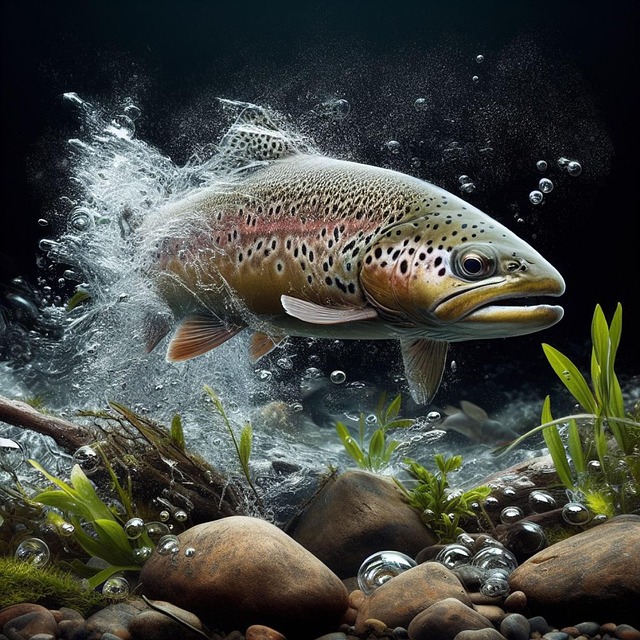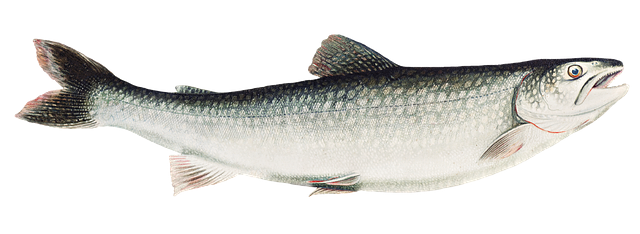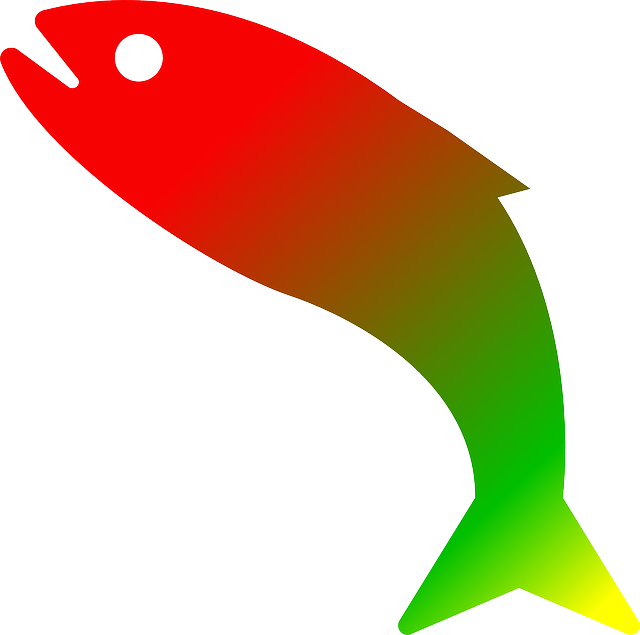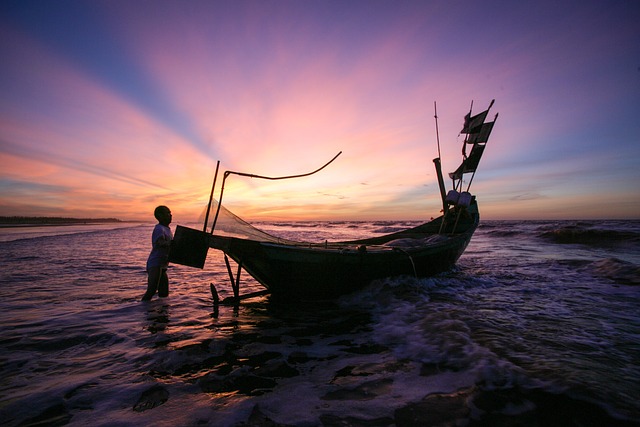Catching trout demands understanding their habitat preferences and seasonal behavioral shifts. These fish thrive in cool (50°F-68°F / 10°C-20°C), clear waters with rocky or gravelly bottoms, found in streams, rivers, and lakes. Anglers must adapt techniques based on temperature fluctuations—warmer months see them seeking deeper pools or shady riffles, while colder seasons bring them to shallower areas. Knowledge of water dynamics, like stream flow and lake characteristics, enhances catch success. Optimal times for catching trout vary seasonally, with spring focusing on smaller streams, summer targeting deeper waters, and fall offering prime opportunities in shallows.
Uncover the secrets of trout habitats and master the art of catching these elusive creatures with our comprehensive guide. From understanding their behavior and preferred environments to identifying remote hotspots, this article is your ultimate resource for successful trout fishing. Learn how water temperature, stream types, and seasonal variations play a crucial role in locating these magnificent fish. Discover the unique characteristics of lake and reservoir habitats and explore strategies to enhance your trout-catching experience.
- Understanding Trout Behavior: What They Like and Where They Live
- The Role of Water Temperature in Trout Habitats
- Types of Streams and Rivers Ideal for Trout Fishing
- Lake and Reservoir Trout: Their Unique Environments
- Identifying and Exploring Remote Trout Hotspots
- Seasonal Changes: When and Where to Catch Trout Throughout the Year
Understanding Trout Behavior: What They Like and Where They Live
Trout are fascinating creatures, and understanding their behavior is key to successful catching them. These fish are highly selective in their habitat preferences, often favoring cool, clear waters with a constant supply of oxygen. They typically inhabit streams, rivers, and lakes, preferring areas with rocky or gravelly bottoms as these provide ample hiding spots and food sources like insects and small crustaceans.
Knowing where to find trout involves recognizing their preferred conditions. During the warmer months, they tend to seek deeper, cooler waters, often moving to pools or shady riffles. In contrast, in colder seasons, they may venture into shallower areas where they can warm up efficiently while still having access to suitable hiding places. This dynamic behavior makes trout a challenge but also a rewarding catch for anglers, who must adapt their techniques accordingly.
The Role of Water Temperature in Trout Habitats
When it comes to catching trout, understanding their habitat preferences is key. Water temperature plays a pivotal role in shaping where and how these aquatic creatures thrive. Trout are cold-water fish, preferring temperatures that range from 50°F to 68°F (10°C to 20°C). They tend to seek out deeper waters during warmer months as shallow areas can become too hot and uncomfortable for them. In contrast, during colder seasons, trout might move to shallower regions closer to the shore, where they find refuge from both predators and extreme cold.
Stream flow also interacts with water temperature to create diverse microhabitats suitable for trout. Rapid currents help mix in oxygen-rich water, while slower sections allow temperatures to stabilize, providing ideal conditions for these fish to feed and reproduce. By knowing how water temperature fluctuates across different seasons and within various stream sections, anglers can strategically target trout, increasing their chances of a successful catch.
Types of Streams and Rivers Ideal for Trout Fishing
When it comes to catching trout, the type of stream or river you venture into plays a significant role in determining your success. Trout are cold-water fish, preferring waters that range from 50 to 68 degrees Fahrenheit (10-20 degrees Celsius). This preference makes them most commonly found in clear, well-oxygenated streams and rivers with stable water flows.
Ideal habitats for trout include small to medium-sized streams with rocky or gravelly bottoms, as these offer plenty of cover and food sources. Rivers with riffles and pools also provide the perfect mix of shelter and foraging opportunities. Additionally, certain species of trout, such as rainbow and cutthroat, thrive in alpine lakes and high-mountain streams, where they find cool, pristine waters essential for their survival and growth.
Lake and Reservoir Trout: Their Unique Environments
Trout, especially those found in freshwater environments, have specific habitat requirements that influence where and how they thrive. Lakes and reservoirs play a significant role in the global trout population, offering unique ecological niches for these fish to flourish. These bodies of water provide a distinct set of conditions compared to rivers or streams, making them particularly appealing for catching trout.
Lake and reservoir trout often inhabit deeper waters during certain times of the year, seeking areas with cooler temperatures and ample oxygen levels. They can be found near shorelines, around submerged structures like weeds or rocks, or in deep channels. Reservoirs, due to their man-made nature, sometimes have varying depths and water quality, creating diverse habitats that attract different trout species. For anglers targeting these freshwater trout, understanding the unique characteristics of lakes and reservoirs is key to successfully catching them.
Identifying and Exploring Remote Trout Hotspots
In the quest for catching trout, understanding their habitat preferences is key. Remote Trout hotspots often lie in the most unexpected places—from pristine alpine lakes nestled high in mountains to meandering rivers cutting through deep canyons. These spots provide a mix of cool, oxygen-rich waters, ample shelter from predators, and an abundance of food sources.
Exploring these remote areas requires a blend of thorough research and adaptability. Anglers can uncover hidden gems by studying topographical maps, consulting local fishing guides, or joining online forums dedicated to trout fishing. Once on site, the art of stealth and quiet observation becomes crucial as trout are sensitive to disturbance. By identifying key features like underwater structures, vegetation growth, and water current patterns, anglers enhance their chances of locating these elusive fish and enjoy a truly rewarding catching experience.
Seasonal Changes: When and Where to Catch Trout Throughout the Year
The season plays a significant role in determining where and when anglers can successfully catch trout. These fish are cold-water species, preferring temperatures between 57°F and 68°F (14°C to 20°C), so they tend to migrate to deeper, cooler waters during warmer months. In early spring, trout often move into smaller streams and shallower areas as the water temperature starts to rise, making them more accessible for anglers. As summer approaches, they retreat to colder habitats like deep pools, rivers with heavy canopy cover, or alpine streams.
Summer is generally considered a less productive time for catching trout due to their preference for cooler waters. However, in late summer and early fall, as water temperatures begin to cool down again, trout become more active and return to shallower areas. This period offers excellent opportunities for anglers to target these elusive fish. Fall is particularly prime for catching larger trout, as they feed aggressively before winter sets in, making them a favorite among anglers seeking a challenge.
Understanding the science behind trout habitats equips anglers with invaluable knowledge. By considering water temperature, stream types, seasonal shifts, and remote hotspots, you can significantly improve your chances of catching these elusive fish. Armed with this expertise, you’re ready to explore diverse environments, from bustling streams to serene lakes, ensuring a rewarding trout fishing experience throughout the year.



